The Basic Linen Tank Top
As I opened my new order of IL020, I found myself at a loss. ‘ What will I make this time?
Sometimes, when I’m confronted with too many options, I find myself unable to make a decision. ‘ In the case of linen, a yard or two all rolled up in front of me can leave me in a similar state of mind. ‘ There are just too many wonderful options that I can’t even begin to think of any!
Then I had my mini revelation. Why not make a few of my wardrobe staples out of linen? It made perfect sense! ‘ I could hardly believe I had wasted so much time wondering what to make. ‘ So I embarked on making a simple and basic linen tank.
If you live in Southern California, like me, then this might be a year round article of clothing! If you live in a place with four real seasons, then layering is still an option! In fact, I’m a big fan of layering because then you can always easily adapt to any sudden changes in the weather.
All I did was basically trace one of my favorite tank tops to make a pattern, cut and sew some IL020, and that was it! So let’s make this essential wardrobe item.
Materials:
- linen
- scissors
- paper and pencil
- sewing machine
Shop for light weight 100% linen IL020 here >>>>>>
The type of linen you choose is completely up to you. ‘ I wanted my tank top to be slightly sheer and have a light, summery feel to it (even with its dark color). ‘ Luckily, I had some’ IL020′ Linen in Duke Indigo from this week’s sale.
Shop for light weight 100% linen IL020 here >>>>>>
I wanted to add a little something to my basic tank, so I played around with the cut ever so slightly by extending the back. ‘ By this I mean, I measured the bottom length of the back of my linen to be a couple of inches longer than the front. ‘ Nothing too crazy, but I like the unexpected asymmetrical detail. ‘ I think It gives this simple tank a more fashionable element.
To make the pattern, I just traced one of my favorite tanks onto some paper. ‘ I choose a looser style because linen doesn’t allow for much stretching. ‘ Remember, you need to add ‘½ all the way around for the seam.
First, I traced the front piece. ‘ I only traced one side because I plan to lay it on top of a double layer of fabric. ‘ It will go against the fold, so you end up with a perfectly symmetrical piece.
Fold your fabric over once and lay the front pattern along the folded edge. ‘ The part of your pattern which will be the center of the tank should be running along the folded edge. ‘ When you finish cutting, you should have a symmetrical front piece.
Seam the top of each shoulder together to attach the front and back pieces. ‘ I wanted a clean neckline and armholes, so I cut a 1 inch wide strip of fabric on a bias.
I then folded it and sewed it along the inside edges. I turned and pressed the strip inside the tank, and stitched it down on the folded edge.
Essentially, I just added a strip to fold towards the seam, so a nice edge was formed.
This step is optional and you can play around with other finishing techniques too.
The only thing left to do now is seam the edges together and finish the bottom hem. ‘ Your super easy tank top is made!
Here’s a picture of the bottom with the longer back section.
Making clothes with linen is made even easier when you trace one of your favorite articles of clothing. ‘ I’m willing to bet you’ll like it more once it’s made of linen!
You can sew a tank top just like the one in my tutorial from light weight, 100% linen IL020. Follow the link below to purchase IL020:
[maxbutton id=”4″]
*Have you seen our’ Facebook‘ page yet?





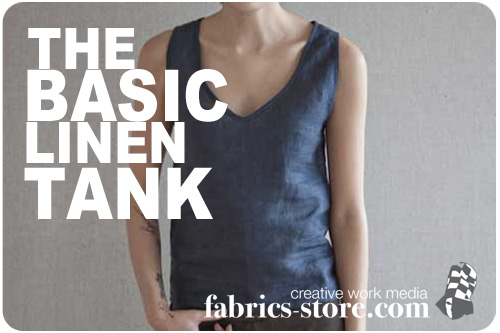
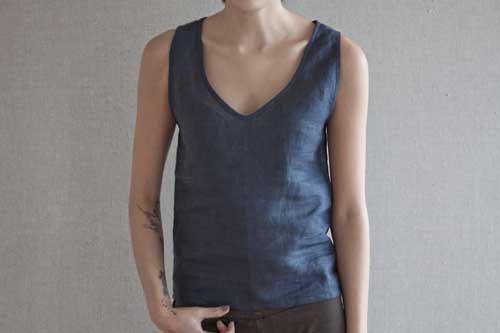

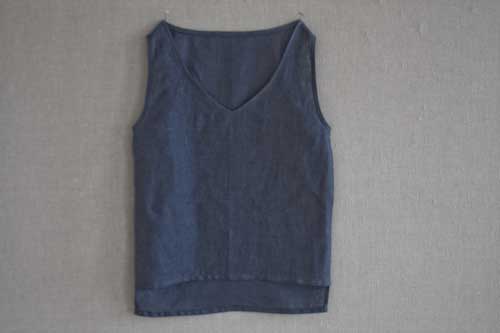




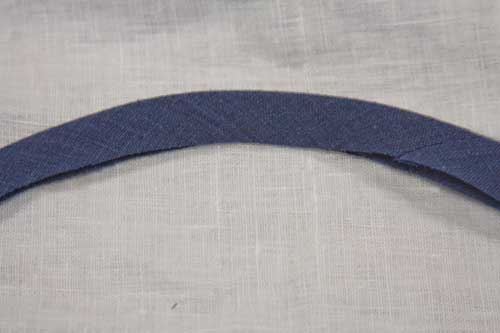
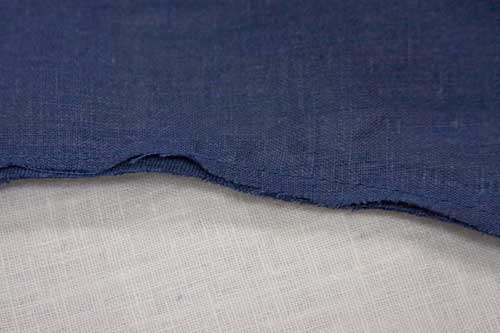

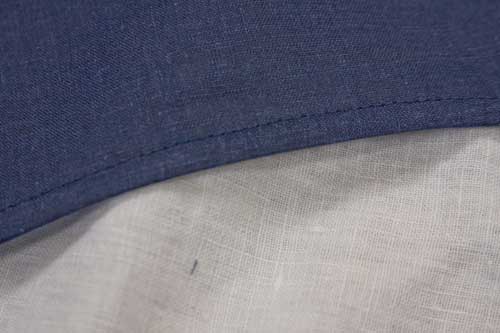
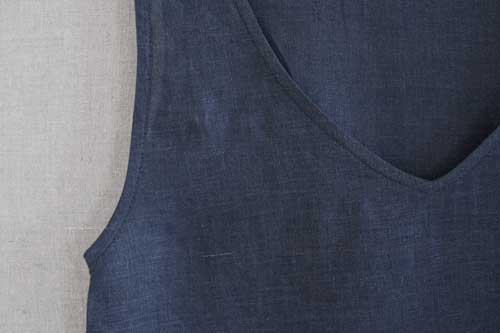
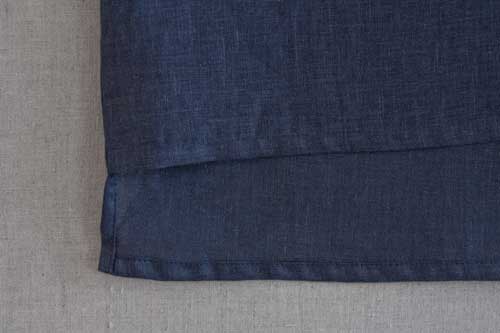
















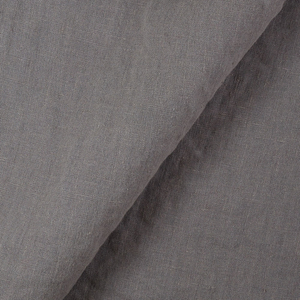


























15 Comments
Susana
I have to smile at the reference to linen being “delicate.” A few years ago, I had laundered and was hanging up some clothes left over from a yard sale. One was a linen top. A gal there at the time asked me if linen shouldn’t always be dry-cleaned (she’s not the brightest bulb in the socket). I told her Egyptian mummies were wrapped in linen thousands of years ago and asked her where the Egyptians took their dry cleaning! Commercial manufacturers put the “dry clean only” labels in their clothes to cover their backsides and to let them use trims and findings that aren’t washable. When we make our own, those considerations don’t apply, especially if we prewash and dry.
Also, I just dug out a skirt I made some years ago from my own design. It combines a lt.wt. denim with eyelet, but it could be just as well made with linen. Where I joined the denim and eyelet, I wanted to be sure the seams were pressed toward the denim side and stayed there, so I used a decorative stitch from my machine in a color a little darker than the fabric. Then I used the same stitch around the bottom hem and also down the length of self-fabric belt loops. This same technique could be used around the neckline and armholes of this top to great effect.
Linda
I’m doing a summation here:
“To make the pattern, I just traced one of my favorite tanks onto some paper. I choose a looser style because linen doesn’t allow for much stretching. Remember, you need to add ‘½ all the way around for the seam.”
That looks like a one-half-inch seam allowance.
“First, I traced the front piece. I only traced one side because I plan to lay it on top of a double layer of fabric. It will go against the fold, so you end up with a perfectly symmetrical piece.
“Fold your fabric over once and lay the front pattern along the folded edge. The part of your pattern which will be the center of the tank should be running along the folded edge. When you finish cutting, you should have a symmetrical front piece.”
The yardage will be however much you need; measure around yourself loosely, add a little for cutting strips of bias (on an angle), and extrapolate from there. I’m 36″ around at the widest, but the linen from here is 56″+ so I can get away with half a yard for a little top like this.
“Seam the top of each shoulder together to attach the front and back pieces. I wanted a clean neckline and armholes, so I cut a 1 inch wide strip of fabric on a bias.
I then folded it and sewed it along the inside edges.”
I use flat-felled seams for any seam I plan never to open.
The bias strip is first sewn on with good sides facing each other, then turned twice and top-stitched to leave a clean edge.
Seam the sides. Hem the bottom.
Easy! Thanks!
Rosalyn Finnegan
I am quite new to fabric selection and sewing and I would like to ask what does “softened” fabric mean. Does it mean that the fabric has been washed and if so, do I wash it again.
Thank you.
Belinda
Any hints on yardage needed? You say “a yard or two” in the description but that’s kind of vague.
Looks like a fun project. I would love to try it.
Cathy
Maybe I missed it, but I saw nothing about adding for the seam allowance (even a self facing will require a seam allowance), not to mention ease. Yes, beautiful work! Linen is a pleasure to iron, and I hate to iron! Plus it’s absolutely necessary for all kinds of sewing.
ilda
I notice that the paper you are using to trace the fabric has a shiny look to it. What type of paper are you using? What are its advantages over other types of paper? Where would I purchase it?
Joyce
I like to use a french seam to make sure that the seam of my garment doesn’t ravel. It is especially nice on linen jackets that are not lined. It does take a little bit longer but is very pretty.
Carolyn Crowder
I agree about the bias trim. I sew and Im not understanding how to got the nice finish. Did you encase the edges…stitch to outside the turn inside…or opposite. I love the bias finish and the hem finishing. Great item to make for my website
Dianne
Joy, I never work with linen without a couple of hot washes and hot dries. Like a lot of people, I used to think linen was “delicate” but after doing some reading, I found out that it’s a pretty tough fabric. Our grandmothers had linen aprons and towels and those didn’t go to the dry cleaners!! I also use linen as bath towels!
Patricia Ankrom
A vinegar H2O solution will neutralize the chemicals (usually formaldahide) used to treat most fabrics. Look closely at the hem edge in the last photo. If a vinegar solution was used (in a squeeze bottle of course) then the hem would be very flat and smooth. It would work to smooth out the drag lines as well. Try it.
Louise Mowder
A beautiful top – but more importantly, a beautiful explanation of the processes that go into creating a new cloth garment. It’s a lot like cabinet-making or woodworking, but with fabric – which has “give” – instead of solid, unbending materials. I love the way that you explained how to make the facings.
Have you thought of offering an online sewing course? Or selling a CD-ROM or DVD of instructions for more difficult or advanced projects? Heavy-weight linen is *especially good for slipcovers, which can be extremely expensive to have made-to-order. A course in how to construct them would be an asset to homeowners and decorators.
Thank you for this. You have a gift for teaching.
Joy
I never see you print anything about preshrinking linen. I never do any sewing with linen without a hot wash and a hot dry first. It will shrink. Also, although the edges and seams of your tank top were beautifully finished, you never mention that linen will RAVEL like no tomorrow with washing and all raw edges should be contained. I learned that on my first garment!
Anita
This is a cute top, but the directions are unclear re the neckline and armholes. If someone is unfamiliar with binding edges with self- fabric bias, then this will be very confusing. The photos should show all of those cutting and sewing steps correctly, and the wording should make sense. But it is a good reminder of what a nice project can be made with linen.
Daria M
Hi Patricia! thanks for the additional info. I have a question tho – why vinegar? what does vinegar do while pressing? thanks!
Patricia Ankrom
Nice clean neckline and armhole finish. I am trying to pix how you did that with a one inch bias tape (folded into half) made from self fabric. How big were the seam allowances? then you turned it to the inside and top stitched. clip allowances? pressing is mandatory here and lots of it. Try pressing with squirt bottle of vinegar and water (one inch to 10 inches of H2O. Still lovely garment and versatile.